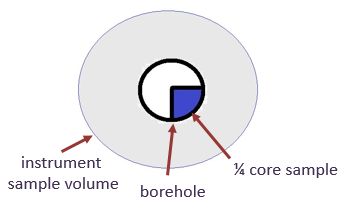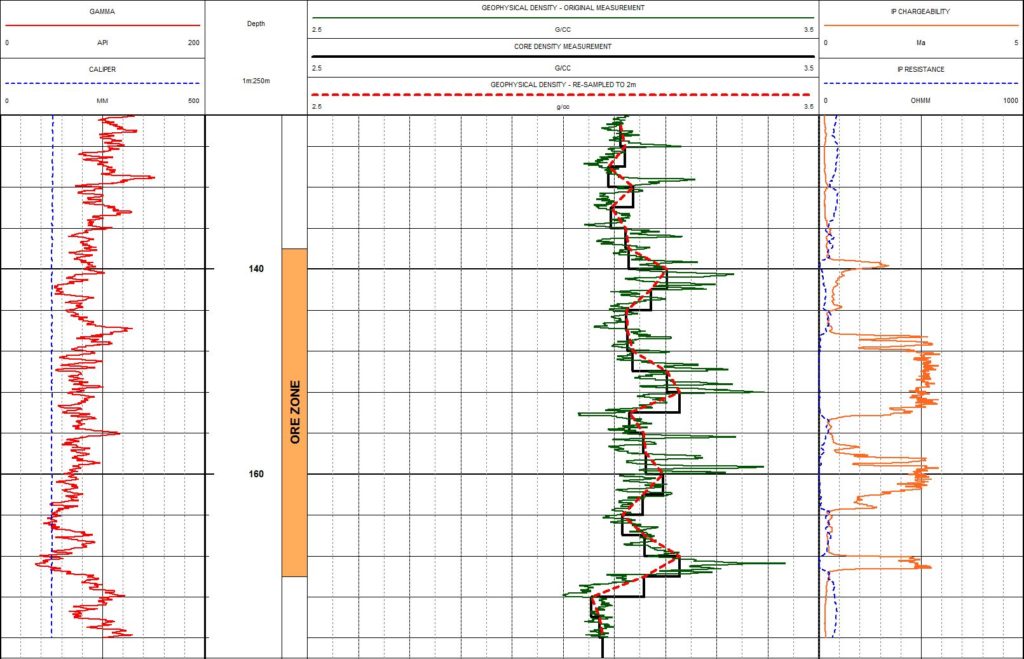Borehole Density Measurements – Geophysical Logging OVERVIEW:
Geophysical borehole density logging is a rapid, cost effective and accurate method to obtain bulk density values for ore modelling. In many mineralisation styles, the density value can be related to the ore grade. Outside of ore grade the bulk density measurements can be used for overburden stripping tonnage estimation or as a porosity measurement.
Borehole Density Measurements – Geophysical Logging METHOD COMPARISON:
Density values can be calculated from core and/or bulk trenching, as well as geophysical borehole logging. Some mining operations prefer the former methods at the expense of geophysical borehole logging. Both core measurements and bulk sampling have downsides when compared to geophysical borehole density measurements.
Density measurements from a core sample (commonly the core volume has been reduced from the original volume) sample volume is the sample itself. The geophysical density measurements, as with many other geophysical borehole measurements, is influenced by a volume of the rock far greater than the borehole itself. Other factors which influence the core measurements are the handling of the core from the barrel to the laboratory which can have a significant influence on the measurement. The laboratory measurement is as good as the sample received.
Density measurements from bulk sampling through trenches would have the largest sample volume but sample handling and expense of the methods must be questioned
Borehole Density Measurements – Geophysical Logging COMPARING DATA SETS:
Understanding the different density measurement methods and their data format is important when comparing the method values. It is not uncommon for core density measurements to be presented every 1m, every 2m up to every 10m. There is great potential for averaging errors. Geophysical borehole density measurements are much more consistent and high resolution compared to the core data. Look at the example below, where thin high density intervals are highlighted in the ore zone. The averaging of the core values has completely eliminated these intervals.
Geophysical density measurements are easily presented through re-sampling in the same data sampling format as for core measurements – see red curve below.



